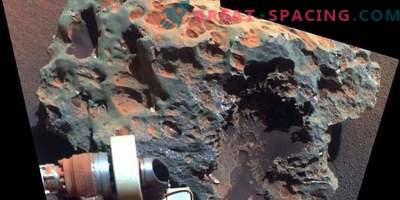
This image shows two different views of Ancient Mars: one warm and humid (top left), and the second a frozen, icy world.
Based on new research, it becomes clear that Ancient Mars may have more resembled a block of ice than a warm, moist planet, as many researchers believe. Observations show that the channels that are visible on the surface of the Red Planet better explain erosion from snow and ice, rather than running water, which flowed along its surface in the distant past.
But if in the past, the Red Planet really looked like an icy desert, the appearance of potential life on it 3 or 4 billion years ago could have encountered new difficulties, the researchers say.
Robin Wordsworth, lead author of the study and associate professor at the Harvard School of Engineering and Applied Sciences, said in a statement that he had not yet fully understood this question: "There is a lot of work that remains to be done."
Wordsworth and his team came to this conclusion after launching a 3-D model of the atmosphere to see how water circulates between it and the surface of Mars billions of years ago.
The first option considered the moderate terrain of Mars, with a temperature of about 10 degrees Celsius. The second scenario was in ice conditions, where the air was cooled to minus 48C.
As a result, it turned out that the “cold” model is more suited to creating deep channels on the surface of the planet that spacecraft have been observing for a long time. In addition, the researchers said that the “cold model” more accurately reflects the conditions with the development of our Sun (its diameter was then 25 percent of today's) and the axis of Mars, which was tilted 3-4 billion years ago. This scenario assumes that the poles of Mars were tilted towards the Sun, and ice was accumulating at the equator.
Is Mars wet enough to support life?
At that time, there was also a thicker atmosphere, which made the effect even stronger: it was cold at the equator, and warm at the poles. So maybe in the past, Mars was warm and wet? Scientists have said that such a scenario is unlikely, since previous studies show that carbon dioxide, dust and clouds are not enough for such conditions.
After adding new effects to the model, scientists came up with a scenario where the amount of precipitation across the planet has changed significantly. Arabia and the Hellas Basin, where there are several erosive formations, would be wet areas, the researchers said.
In addition, the model showed some places (for example, Margaritifer Sinus) that were almost dry. This is because, like on Earth, mountains on Mars also delay rain. In particular, the Tarsis region on the Red Planet would create precipitation on the western (upwind) side, while Margaritifer Sinus was dry in the east.











































